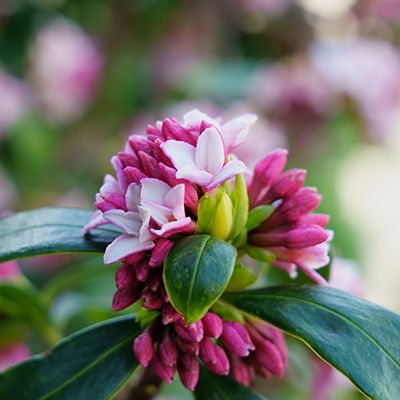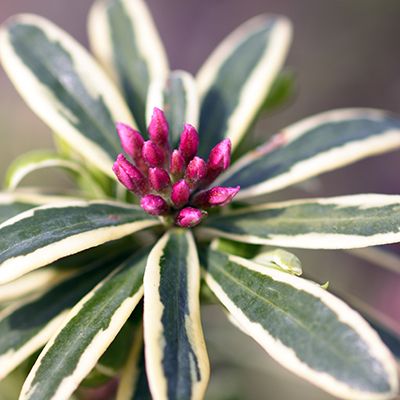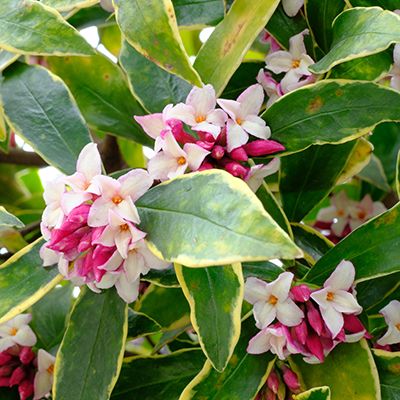


Winter Daphne (Daphne Odora)
When we gardeners talk about “Daphne”, we are referring to Daphne Odora, Marginata. There are eighteen different species of Daphne and at least seven different varieties of Daphne Odora. The Daphne we have learned to love and appreciate in native to China and was introduced to the U.S. in 1790.
Under ideal conditions, Daphne matures at about four feet tall and four feet wide. Cases have been reported where the plant grows to 8 or 10 feet tall and as wide. It is extremely frost hardy and has survived temperatures of -3°F.
Daphne can be a fickle plant and if not carefully nurtured may die. The usual symptoms are that the plant will languish, lose foliage color, appear a bit wilted and then regardless of what is done, it dies. By the time the first symptoms appear, it is probably too late to do anything for the plant’s survival.
Daphnes need a porous, well drained soil; not a normal situation in the S.F. Bay Area. They also need a dappled or morning sun. Plant on the east or north facing side of the house or where it will be shaded from noon to 4 p.m. or longer. To prepare our heavy soil for planting, dig a hole three times as wide on one and a half times as deep as the soil in the container. Set this soil aside. Prepare a mixture of 2 parts native soil, 1 part perlite and 2 parts Gold Rush or fine fir bark. Add enough of this mixture to the hole and press down firmly until the soil level in the plant pot is about one inch higher than the surrounding ground level when the plant pot is placed in the hole. Center the unpotted Daphne in the hole and fill in half way with the mixture. Pat down gently. Water to settle the mixture around the Daphne and continue filling. Pat down again. Give one final watering which should be sufficient for the next week or two.
If the Daphne is being planted in the Farm Hills, Emerald Hills or similar areas where the soil contains broken rock, you can simplify the planting. Dig the hole 2 or 3 times as wide as the container and one inch less deep than the soil height in the container. Mix 1/3 Gold Rush with the native soil and fill in around the planted Daphne.
Fertilize the Daphne lightly twice a year: Valentine’s Day and the Fourth of July. Use Master Nursery Rose and Flower Food. Do not use an acid fertilizer.
When the rainy season ends, do not start irrigating your Daphne until about the first of May. In early season cool weather, water about once a month. Later, as the weather warms, you can irrigate your Daphne about every two or three weeks. If you have a moisture meter, test the soil and do not water again until it reads almost dry. Never plant a Daphne where it can get sprinkled by lawn or other shrub sprinklers. Do not place a timed water emitter near the Daphne.
Daphnes should be pruned and shaped right after they have finished blooming.
If Star Jasmine or other shrubs grow around the Daphne, that’s okay.
If you forgot to water the Daphne for 3 or 4 weeks in the summer, that’s probably okay too. Just give it a big drink.
Mulching with fir bark, redwood compost, Gold Rush or similar is okay. Just remember you may have to decrease your watering schedule.
The soil in the Bay Area is loaded with water molds and fungi. Daphne is very susceptible to all of them. When the surface soil stays moist, these disease organisms attack and kill Daphnes. Do not water your Daphne if the surface soil is damp.
If you transplant an established Daphne, it will probably die.
If you prune Daphne when it is in bud or bloom and place them indoors in water they will last and provide fragrance for a week or more.